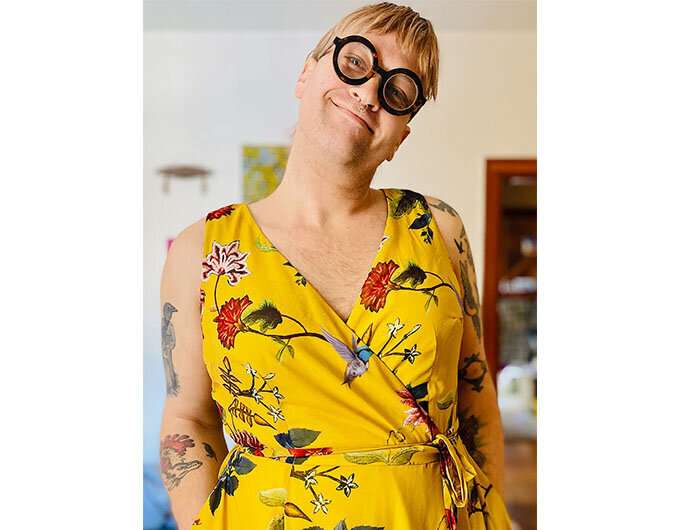
There is a misconception that TGD cases are not common, when in fact about one in every 200 people seek care for gender related issues—that’s as common as having a thyroid gland that is over functioning.
“I was very anxious and nervous about coming out to my family doctor,” said Josephine Kroeker, a 40-year-old trans woman living in Saskatoon, “but my experience was very positive. He just looked at me and said, ‘congratulations—that’s awesome.'”
Earlier this year, Kroeker shared about her transgender journey in an essay she wrote for CBC titled “Writing Joy Into the Transgender Narrative.”
For Kroeker, knowing that her clinic was a safe space helped to make what could be a difficult conversation a bit easier.
“It helped that there were safe space posters on the wall at West Winds. Having that around feels like a good indication that the conversation might go well, or at the very least it might go better than at a place where there aren’t posters on the wall,” she said.
While posters are helpful in identifying inclusive spaces, there are additional steps that physicians can take towards creating a culturally safe space. Creating an environment that is safe for TGD patients to access healthcare does not always require additional training or expertise on anything to do with hormone therapy or diagnosis.
“One way that you can start working towards cultural safety within your practice is to start learning about pronouns, knowing that it is a journey and that we all have a ways to go,” said Dr. Lori Shram (MD), a family doctor at the Family Medicine Unit in Regina.
“Using appropriate pronouns is important because it symbolizes the attitudes or underlying intentionality of the people using them. It is something simple that people can do to create safer spaces and all it requires is some practice,” shared Kroeker.
Safer spaces are created when physicians challenge the assumptions they have about patients when they first walk through the door. West Winds family physician and an assistant professor at USask College of Medicine, Dr. Carla Holinaty (MD) believes that “physicians need to approach patients in a non-judgemental way—not assuming that everyone is cis-gendered and heterosexual.”
It is also important not to assume that someone who is trans is there for trans related care. When physicians put these patients into a box, they are not always able to treat the whole person, and sometimes overlook other medical conditions.
Physicians need to “focus on a patients trans related health when it is appropriate to do so and recognize when it’s not—where it is not relevant to their health,” says Schram.
“The idea that we won’t take on something that’s this prevalent and make it okay for people to get care is disappointing. Even if we don’t yet feel comfortable with hormone referrals or provision of post-operative care, these are patients that won’t get any care unless we make it safe,” said Dr. Ginger Ruddy (MD), a family physician practicing at West Winds Primary Health in Saskatoon.
While Kroeker’s experience accessing trans related care was positive, not all trans and gender diverse patients have the same experience.
“Unfortunately, there are holes in cultural safety principles and cultural acceptance. Trans people are being misgendered and are often not treated well in the health-care system, which is really unfortunate,” said Dr. Megan Clark (MD), an assistant professor at USask College of Medicine and a family physician at Regina’s Family Medicine Unit.
In April 2021, two peer health navigators will start work as part of a new pilot project called Trans Research And Navigation Saskatchewan (TRANS). Funded by the Saskatchewan Health Research Foundation and the Saskatchewan Centre for Patient-Oriented Research, the project aims to help people who are TGD, and their support people, navigate things like: coming out, finding a safe primary care provider, navigating finding hormone therapy and trans-related surgery access, and finding relevant mental health and community supports.
“Overall, this is what advocacy in family medicine looks like to me. It’s Saskatchewan grassroots community team building. It’s mapping out Saskatchewan’s current state of health and healthcare for people who are TGD. It is the macro level of the micro I do in clinic everyday with my TGD patients,” said Clark, who is a co-principal investigator with Dr. Stephanie Madill (Ph.D.) from the School of Rehab Science on the TRANS project.
Source: Read Full Article